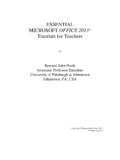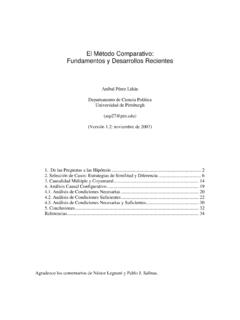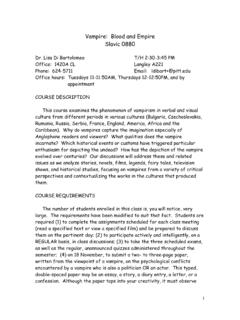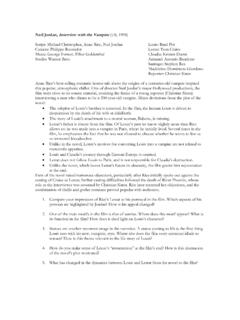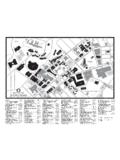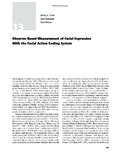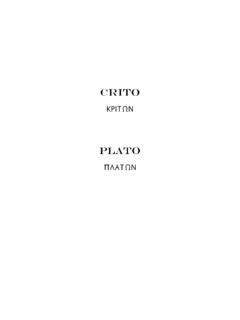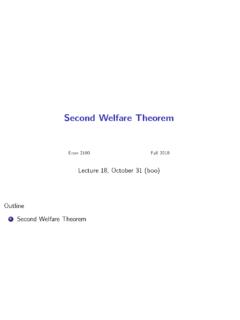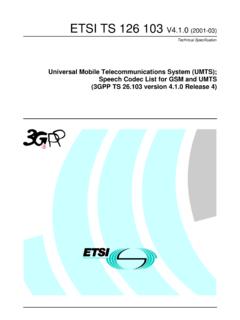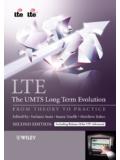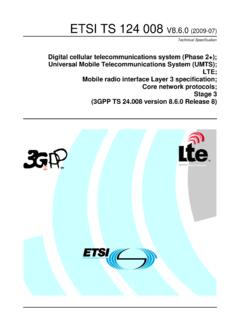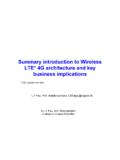Transcription of c11
1 11 High-speed DownlinkPacket AccessAntti Toskala, Harri Holma, Troels Kolding, Frank Frederiksenand Preben MogensenThis chapter presents High-speed Downlink Packet Access (HSDPA) for WCDMA thekey new feature included in Release 5 specifications. The HSDPA concept has beendesigned to increase packet data throughput by means of fast physical layer (L1) retrans-mission and transmission combining as well as fast link adaptation controlled by the NodeB (Base Transceiver Station (BTS)). This chapter is organised as follows: First, HSDPAkey aspects are presented and a comparison to Release 99 downlink packet access pos-sibilities is made. Next, the impact of HSDPA on the terminal uplink (user equipment(UE)) capability classes is summarised and an HSDPA performance analysis is presented,including a comparison to Release 99 packetdata capabilities.
2 The chapter is concludedwith a short discussion of evolution possibilities of Release 99 WCDMA Downlink Packet Data CapabilitiesVarious methods for packet data transmission in WCDMA downlink already exist inRelease 99. As described in Chapter 10, the three different channels in Release 99/Release 4 WCDMA specifications that can be used for downlink packet data are Dedicated Channel (DCH) Downlink-shared Channel (DSCH) Forward Access Channel (FACH).The DCH can be used basically for any type of service, and it has a fixed spreadingfactor (SF) in the downlink. Thus, it reserves the code space capacity according to thepeak data rate for the connection. For example, with Adaptive Multi Rate (AMR) speechWCDMA for umts , edited by Harri Holma and Antti Toskala 2002 John Wiley & Sons, Ltd280 WCDMA for umts service and packet data, the DCH capacity reserved is equal to the sum of the highest rateused for the AMR speech and the highest rateallowed to be sent simultaneously with fullrate AMR.
3 This can be used even up to 2 Mbps, but reserving the code tree for a veryhigh peak rate with low actual duty cycle is obviously not a very efficient use of coderesources. The DCH is power-controlled andmay be operated in soft handover as details of the downlink DCH can be found in Chapter 6, Section DSCH has been developed to operate always together with a DCH. This way,channel properties can be defined to best suit packet data needs while leaving the datawith tight delay budget, such as speech or video, to be carried by the DCH. The DSCH,in contrast to DCH (or FACH), has a dynamically varying SF informed on a 10-msframe-by-frame basis with the Transport Format Combination Indicator (TFCI) signallingcarried on the associated DCH.
4 The DSCH code resources can be shared between severalusers and the channel may employ either single-code or multi-code transmission. TheDSCH may be fast power-controlled with the associated DCH but does not support softhandover. The associated DCH can be in soft handover, for example, speech is provided onDCH if present with packet data. The DSCH operation is described further in Chapter 6,Section FACH, carried on the secondary common control physical channel (S-CCPCH)can be used to downlink packet data as well. The FACH is operated normally on its own,and it is sent with a fixed SF and typically at rather high-power level to reach all users inthe cell owing to the lack of physical layer feedback in the uplink. There is no fast powercontrol or soft handover for FACH.
5 The S-CCPCH physical layer properties are describedin Chapter 6, Section FACH cannot beused in cases in which simultaneous speechand packet data service is HSDPA ConceptThe key idea of the HSDPA concept is to increase packet data throughput with methodsknown already from Global System for Mobile Communications (GSM)/Enhanced datarates for global evolution (EDGE) standards,including link adaptation and fast physicallayer (L1) retransmission combining. The physical layer retransmission handling has beendiscussed earlier but the inherent large delays of the existing Radio Network Controller(RNC)-based Automatic Repeat reQuest ARQarchitecture would result in unrealisticamounts of memory on the terminal side. Thus, architectural changes are needed to arriveat feasible memory requirements as well as to bring the control for link adaptation closerto the air interface.
6 The transport channel carrying the user data with HSDPA operation isdenoted as the High-speed Downlink-shared Channel (HS-DSCH). A comparison of thebasic properties and components of HS-DSCH and DSCH is conducted in Table simple illustration of the general functionality of HSDPA is provided in Figure Node B estimates the channel quality of each active HSDPA user on the basis of, forinstance, power control, ACK/NACK ratio, Quality of Service (QoS) and HSDPA-specificuser feedback. Scheduling and link adaptation are then conducted at a fast pace dependingon the active scheduling algorithm and the user prioritisation scheme. The channels neededto carry data and downlink/uplink control signalling are described later in this HSDPA, two of the most fundamental features of WCDMA, variable SF and fastpower control, are disabled and replaced by means ofadaptive modulation and codingHigh-speed Downlink Packet Access281 Table of fundamental properties of DSCH and HS-DSCHF eatureDSCHHS-DSCHV ariable spreading factorYesNoFast power controlYesNoAdaptive modulation and coding (AMC)NoYesMulti-code operationYesYes, extendedFast L1 HARQNoYesNote: HARQ: Hybrid Automatic Repeat quality feedback (HS-DPCCH, DCH) - Channel quality indicator, PC commands, ACK/NACK infoUser data(HS-DSCH, HS-SCCH) UE 1UE 2 New Node B functionality, fast scheduling based on.
7 Quality Feedback UE Capability Resource Availability Buffer Status QoS & PriorityNode BFigure operation principle of HSDPA and associated channels(AMC), extensive multi-code operation and a fast and spectrally efficient retransmissionstrategy. In the downlink, WCDMA power control dynamics is in the order of 20 dBcompared to the uplink power control dynamics of 70 dB. The downlink dynamics islimited by the intra-cell interference (interference between users on parallel code channels)and by the Node B implementation. This means that for a user close to the Node B,the power control cannot reduce power maximally, and on the other hand reducing thepower to beyond 20-dB dynamics would have only marginal impact on the capacity.
8 WithHSDPA, this property is now utilised by the link adaptation function and AMC to selecta coding and modulation combination that requires higherEc/Ior, which is available forthe user close to the Node B (or with good interference/channel conditions in short-termsense). This leads to additional user throughput, basically for free. To enable a largedynamic range of the HSDPA link adaptation and to maintain a good spectral efficiency,a user may simultaneously utilise up to 15 multi-codes in parallel. The use of morerobust coding, fast Hybrid Automatic RepeatRequest (HARQ) and multi-code operationremoves the need for variable allow the system to benefit from the short-term variations, the scheduling decisionsare done in the Node B.
9 The idea in HSDPA is to enable a scheduling such that, ifdesired, most of the cell capacity may be allocated to one user for a very short time,when conditions are favourable. In the optimumscenario, the scheduling is able to trackthe fast fading of the for UMTSThe physical layer packet combining basically means that the terminal stores thereceived data packets in soft memory and if decoding has failed, the new transmission iscombined with the old one before channel decoding. The retransmission can be either iden-tical to the first transmission or contain different bits compared with the channel encoderoutput that was received during the last transmission. With this incremental redundancystrategy, one can achieve a diversity gainas well as improved decoding HSDPA Impact on Radio Access Network ArchitectureAll Release 99 transport channels presented earlier in this book are terminated at theRNC.
10 Hence, the retransmission procedure for the packet data is located in the servingRNC, which also handles the connection for the particular user to the core network. Withthe introduction of HS-DSCH, additional intelligence in the form of an HSDPA MediumAccess Control (MAC) layer is installed in the Node B. This way, retransmissions canbe controlled directly by the Node B, leading to faster retransmission and thus shorterdelay with packet data operation when retransmissions are needed. Figure presentsthe difference between retransmission handling with HSDPA and Rel 99 in the case inwhich the serving and controlling RNCs arethe same. In case no relocation procedureis used in the network, the actual termination point could be several RNCs further intothe network.
